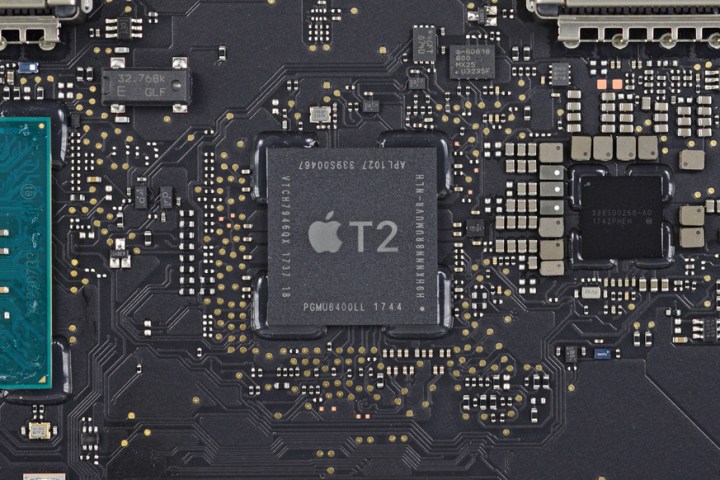
Many iMac Pro owners have reportedly suffered numerous kernel panics — the MacOS version of the dreaded Blue Screen of Death in Windows — since they hit the market at the end of 2017. You can find a handful of threads on Apple’s community forums, including this one, detailing the trials and tribulations customers are experiencing with their expensive iMac Pros and Apple support. The problems apparently reside in the new MacBook Pro laptops, too.
Of all the error messages uploaded to these threads, there is one detail they seem to share: Bridge OS. This is an embedded operating system used by Apple’s stand-alone T2 security chip, which provides the iMac Pro with a secure boot, encrypted storage, live “Hey Siri” commands, and so on. It’s now included in the new 2018 models of the 13- and 15-inch MacBook Pro with Touch Bar.
But whether the T2 chip is behind all the kernel panics is up in the air. The symptoms and solutions are varied across complaints, such as iMac Pro owners daisy-chaining storage devices seeing crashes along with those with nothing connected at all. But Apple is aware of the problems and is apparently working on the issue behind the scenes.
“Looking at the Kernel Panic dumps, looks like someone may have been working on it, as the Kernel Version got bumped from 17.3.0 in January to 17.4.0 yesterday and it feels like I’m seeing fewer panics,” reads one post. “Where it used to panic once or twice a day it now appears to panic once or twice per week.”
Apple is replacing these machines — in some cases twice — but the problems still occur on the new hardware. One owner said he actually turned off the T2 security chip and never saw a Bridge OS-related problem again. Another user made a Time Machine backup, booted into recovery mode, erased and formatted the system disk, and restored from Time Machine for an error-free iMac Pro.
Apple suggests that iMac Pro owners wipe and reload MacOS from scratch, disable FileVault, and disable Power Nap, the latter of which worked for some iMac Pro owners.
According to the threads, the system crashes can be reduced if you don’t daisy-chain devices, don’t use a Thunderbolt 3 to Thunderbolt 2 adapter, turn off Power Nap, turn off Secure Boot, don’t unlock the device with Apple Watch, remove third-party kernel extensions, and turn off every power management option you can find. That’s quite a list.
Many iMac Pro owners claim the kernel panics actually happen mostly at night when the device is idle, pointing to a possible problem with the storage/hibernation mode and/or the wake-over-Ethernet feature. Several owners report crashing with only an Ethernet cable attached, but that could just be a coincidence.
Despite the annoying issues stretched across iMac Pro and MacBook Pro, the version numbers displayed in the error logs show that Apple is indeed on the case. An official fix for the hardware kernel panics is supposedly available in MacOS 10.13.6, although the update may not address sleep-related panics.
Editors' Recommendations
- MacBook Pro 16 vs. MacBook Pro 14: The important differences
- The case for buying the M2 MacBook Air over the M3 model
- Why you should buy a MacBook Air instead of a MacBook Pro
- Apple quietly backtracks on the MacBook Air’s biggest issue
- Why one of my favorite laptops still struggles against the MacBook Pro


